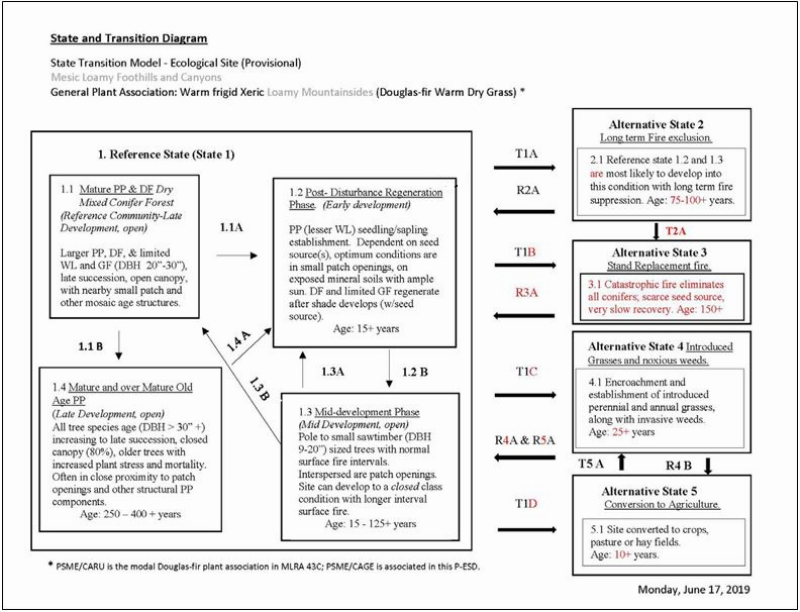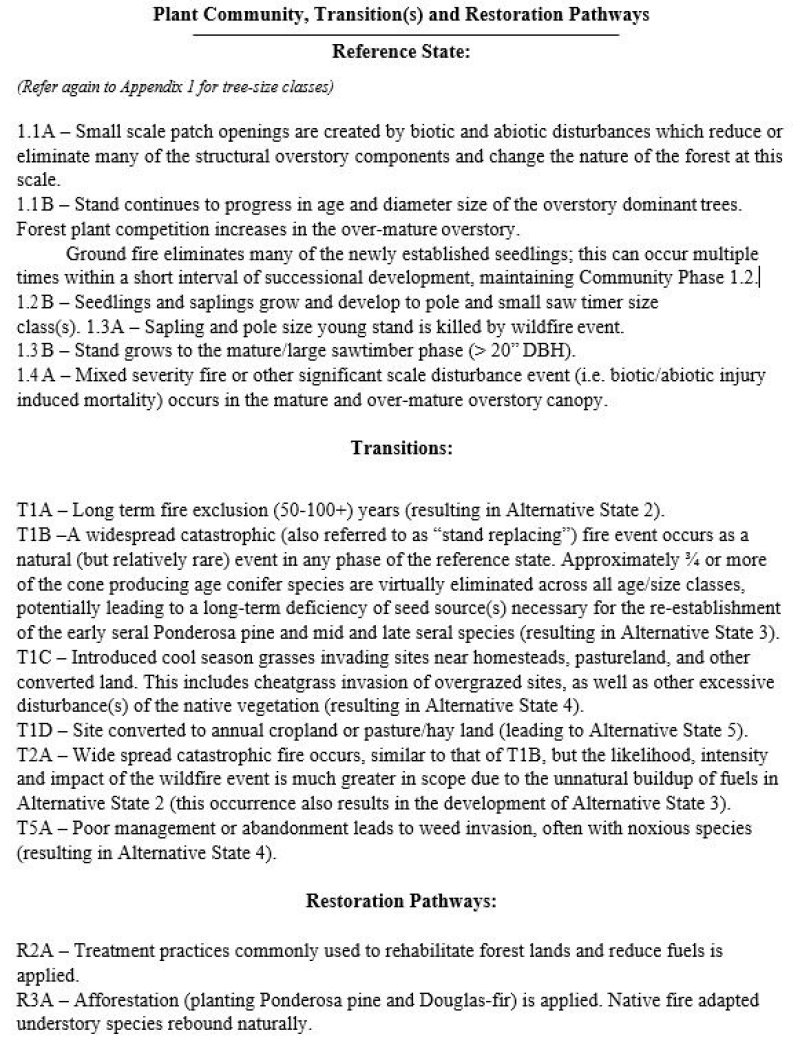
Natural Resources
Conservation Service
Ecological site F043CY502WA
Cool-Frigid, Dry-Xeric, Loamy Mountains (Douglas-fir Cool Dry Grass)
Last updated: 5/13/2025
Accessed: 12/07/2025
General information
Provisional. A provisional ecological site description has undergone quality control and quality assurance review. It contains a working state and transition model and enough information to identify the ecological site.
MLRA notes
Major Land Resource Area (MLRA): 043C–Blue and Seven Devils Mountains
Major Land Resource Area (MLRA): 043C–Blue and Seven Devils Mountains
Description of MLRAs can be found in: United States Department of Agriculture, Natural Resources Conservation Service. 2006. Land Resource Regions and Major Land Resource Areas of the United States, the Caribbean, and the Pacific Basin. U.S. Department of Agriculture Handbook 296.
Available electronically at: http://www.nrcs.usda.gov/wps/portal/nrcs/detail/soils/ref/?cid=nrcs142p2_053624#handbook
LRU notes
Major land resource area (MLRA): 043C-Blue and Seven Devils Mountains
Modal LRU – 43C04 Dissected Basalt Highlands
This LRU is composed predominantly of mid-elevation slopes of foothills, mountains, and canyon walls. The soils tend to be loamy Argixerolls and Haploxerolls with minor ash influence in the surface layer.
Also found in LRU 43C01 - Cold, Moist Volcanic Highlands
Classification relationships
This ES group fits into the National Vegetation Standard’s Central Rocky Mountains Douglas-fir - Ponderosa Pine / Herb WoodlandAlliance and Washington State’s Natural Heritage Program’s Northern Rocky Mountain Dry-Mesic Montane Mixed Conifer Forest.
Ecological site concept
Ecological Site Concept:
This ES is characterized by widely spaced, older mature Ponderosa pine (Pinus ponderosa) dominating the upper canopy layer, with both mature Douglas-fir (Pseutotsuga menziesii) and western larch (Larix occidentalis) in the mid-to upper layer(s) of the forest. Pinegrass (Calamagrosis rubescens) dominates the understory vegetation layer along with limited numbers of low growing shrub species. It is found on mid to high elevation mountain slopes, valley walls and ridges. Soils have loamy textures and are developed on material weathered from basalt with an admixture of loess and volcanic ash in the surface layer. The soils are generally moderately deep to hard basalt bedrock and are well drained.
Associated sites
| F043CY503WA |
Frigid, Moist-Xeric Loamy, Canyons and Mountains (Grand fir/Moist Shrub) frigid, moist-xeric, ashy surface, basalt/andesite geology. |
|---|---|
| F043CY504WA |
Warm-Frigid, Xeric, Loamy, Basalt Mountains and Plateaus (Douglas-fir/warm dry shrub) warm-frigid, xeric, mixed ash surface, basalt geology. |
Similar sites
| F043CY508WA |
Frigid, Xeric, Loamy, Mountains and Plateaus, Mixed Ash Surface Grand fir/pinegrass Mixed ash surface, xeric soil moisture regmie |
|---|---|
| F043CY509WA |
Frigid, Xeric, Loamy Mountains and Plateaus, Ashy Surface Grand fir/pinegrass Ashy surface, xeric soil moisture regime |
| F043CY503WA |
Frigid, Moist-Xeric Loamy, Canyons and Mountains (Grand fir/Moist Shrub) Moist-xeric soil moisture regime |
Table 1. Dominant plant species
| Tree |
(1) Pseudotsuga menziesii var. glauca |
|---|---|
| Shrub |
(1) Spiraea betulifolia |
| Herbaceous |
(1) Calamagrostis rubescens |
Click on box and path labels to scroll to the respective text.

